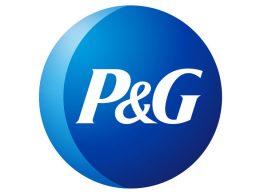by Kurt Reiman, Blackrock
Kurt explains why we hold our neutral call even as the U.S. market has outperformed global peers in recent weeks.
The coronavirus outbreak in late January swiftly shifted the direction in global markets – from an ebullient risk assets rally to an anxious selloff. U.S. stocks had performed in line with global peers, before switching gear to outperform them. We see their performance pattern before late January to reassert itself over the next six to 12 months as growth recovers – and retain our neutral call on U.S. equities.
Analyst estimates on U.S. corporate earnings for a given year have often tended to start in the 10%-12% range in recent history. But the paths through each year – and the correlations with equity performance – can vary widely. See the chart above. Earnings forecasts in 2018 climbed throughout the year due to expectations for tax cut benefits, yet the U.S. equity market suffered its biggest annual loss since 2008 – partly due to tightening financial conditions. In 2019, earnings estimates trended lower through the year, but U.S. equities rallied nearly 30% – fueled by easier financial conditions due to the unusual late-cycle dovish pivot by key developed market (DM) central banks. What’s in store for 2020? We see economic growth returning as a key market driver and an eventual uptick in growth – even if delayed by the coronavirus impact – supporting positive earnings momentum. Yet rising uncertainty around the U.S. election and profit margin erosion typically seen in the late-cycle periods are likely to weigh on U.S. equity performance, we believe.
We remain neutral on the outlook for U.S. equities despite encouraging earnings results. About half of the companies in the S&P 500 Index had reported results as of the end of January, with nearly 70% beating analysts’ earnings estimates, according to Refinitiv data. This compares favorably to a long-term average of 64.9%. Analysts currently expect U.S. earnings to grow about 9% in 2020, a hair lower than the typical range for the start of the year. Yet we see that as an ambitious goal given potential for rising wages and other cost increases to further compress corporate margins. Our analysis of U.S. corporate profit margins over the stages of the business cycle since 1965 showed that profit margins have tended to contract in late-cycle periods. High earnings expectations, combined with these late-cycle dynamics and more attractive valuations in other regions, set a high bar for sustained U.S. outperformance.
Rising political uncertainty around November’s U.S. election is another reason for caution on U.S. equities. Last week’s Iowa Democratic caucuses – with their failures to produce timely results or to winnow down a crowded field – offered a taste of the potential for a highly volatile and noisy nine months ahead. A wide range of potential policy outcomes – in areas such as trade and tariffs, taxation, drug pricing, and regulation of energy and technology – could lead companies to defer spending plans and alter business models. This could heighten market volatility compared to recent years.
The bottom line
We stick to our view that global growth will edge higher in 2020 but expect the pickup to be delayed. U.S. equities could outperform on any further growth scares triggered by the coronavirus outbreak, given their quality bias and perceived resilience. But we remain neutral on U.S. equities, given elevated political uncertainties and the risk to margins. Overall, we stand by our moderate pro-risk stance, and expect an eventual growth pickup to support cyclical equity markets, such as EM and Japan. Within U.S. equities we favor quality companies with above-average return on equity, low leverage and strong cash flow.
Kurt Reiman is Senior Strategist for North America at the BlackRock Investment Institute. He is a regular contributor to The Blog.
Investing involves risks, including possible loss of principal.
This material is not intended to be relied upon as a forecast, research or investment advice, and is not a recommendation, offer or solicitation to buy or sell any securities or to adopt any investment strategy. The opinions expressed are as of February 2020 and may change as subsequent conditions vary. The information and opinions contained in this post are derived from proprietary and non-proprietary sources deemed by BlackRock to be reliable, are not necessarily all-inclusive and are not guaranteed as to accuracy. As such, no warranty of accuracy or reliability is given and no responsibility arising in any other way for errors and omissions (including responsibility to any person by reason of negligence) is accepted by BlackRock, its officers, employees or agents. This post may contain “forward-looking” information that is not purely historical in nature. Such information may include, among other things, projections and forecasts. There is no guarantee that any forecasts made will come to pass. Reliance upon information in this post is at the sole discretion of the reader. Past performance is no guarantee of future results. Index performance is shown for illustrative purposes only. You cannot invest directly in an index.
©2020 BlackRock, Inc. All rights reserved. BLACKROCK is a registered trademark of BlackRock, Inc., or its subsidiaries in the United States and elsewhere. All other marks are the property of their respective owners.
BIIM0220U-1084822
This post was first published at the official blog of Blackrock.














